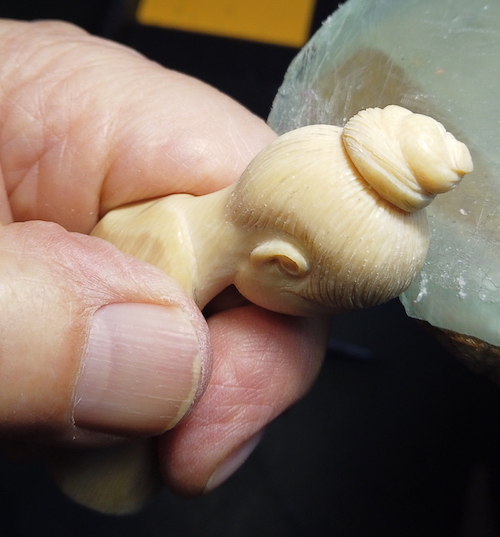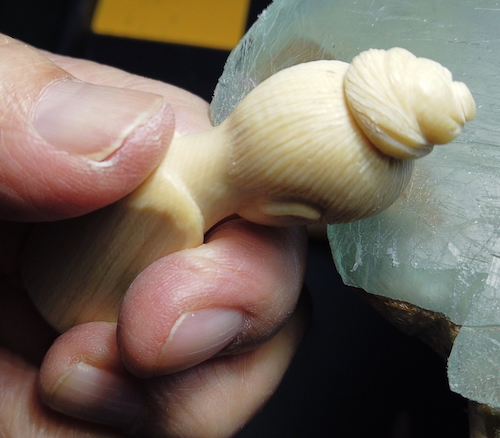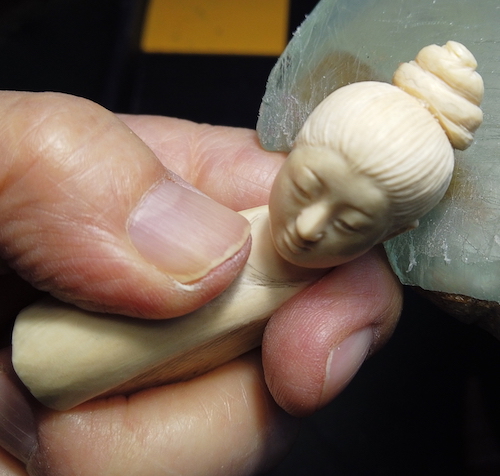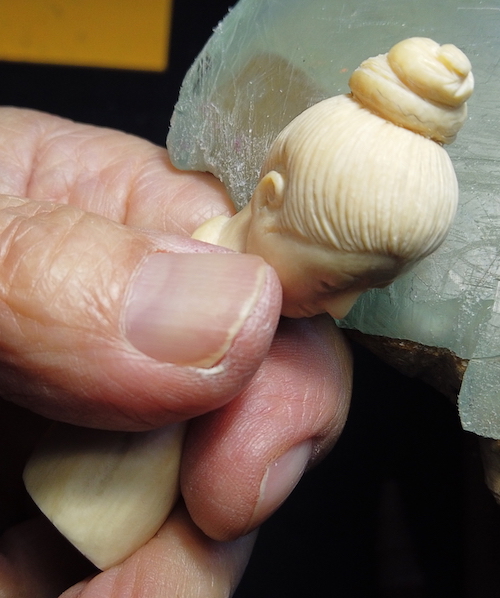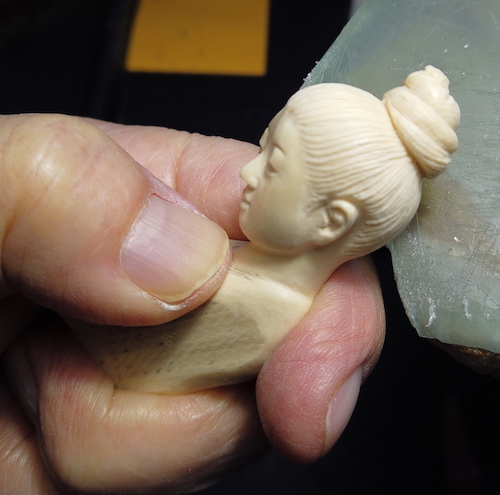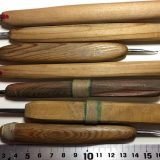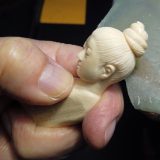In this video, my father carves the hair on the head just like part 2, and then moves on to carving a part of the bun.
There are two main topics in this video.
The first topic is the difficulty of carving across grains. When carving something like hair on the head, the carving is done all around the material. In such a case, it is inevitable to carve across grains, and scrapers do not move smoothly compared to when carving along grains. (This problem is more significant with mammoth tusk and wood than ivory.) One of the ways to cope with the problem is to move the hidari-ba scraper toward the opposite, i.e., toward the left.
The second topic is that my father uses kime-no-kogatana (lit. defining scrapers) to split a ridge of hair, the scrapers of which were first shown in part 1. I did my best to make a close-up video, so I think you can see the tip of the scrapers as they move.
Incidentally, this is not being discussed in the video, but it is important to hold the work in place against the carving post when doing very delicate and meticulous carving. I think some of you might find it interesting to see how my father holds the work in his left hand at around 24:30. There is no rule as to how to hold a piece or how to use the carving post, and my father does whatever is suitable for the situation.
Here are some photos of the work taken just after the end of this video.
